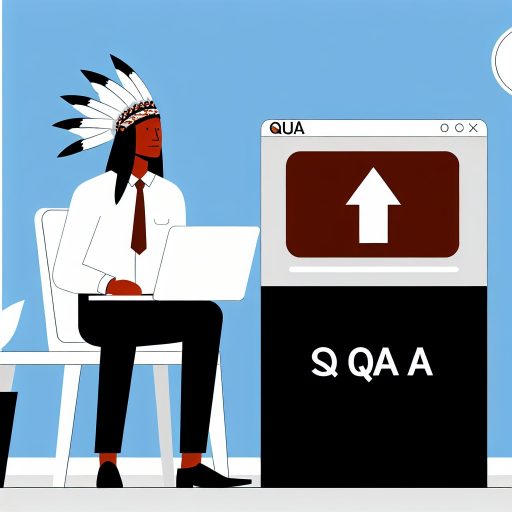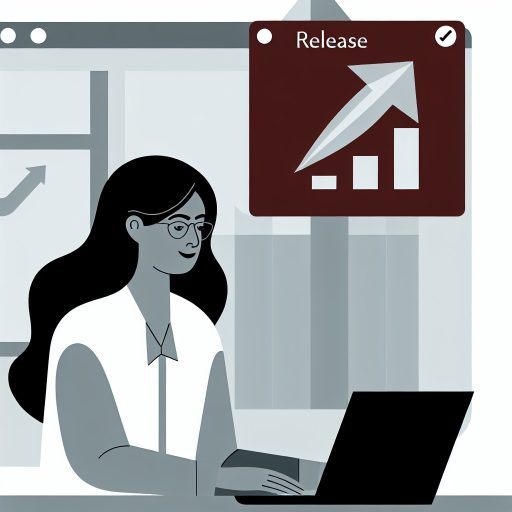Introduction
Priority is crucial in IT projects.
It ensures resources are allocated effectively.
Challenges of prioritization include conflicting stakeholder interests.
Limited resources also pose prioritization challenges.
Effective prioritization leads to delivering value faster.
It helps in meeting project goals.
Additionally, prioritization enhances team efficiency.
Understand the Business Goals
- Identify and prioritize the business goals that need to be achieved through the IT project.
- Align the release priorities with these goals to ensure project success.
When it comes to prioritizing releases in IT projects, one of the first steps is to understand the business goals.
The project is aiming to achieve these goals.
Identifying and prioritizing these goals helps ensure the releases align with the organization’s objectives.
Working closely with stakeholders helps gather input on what they believe the key business goals are.
This process helps prioritize releases that will have the most significant impact on the business.
It also ensures resources are allocated efficiently throughout the project.
By aligning release priorities with these goals, the project moves in the right direction.
The team stays focused on delivering value to the business at every step.
This alignment is crucial for project success.
It helps keep the project on track and aligned with organizational objectives.
- Assess the potential impact of each release on the business goals.
- Evaluate the effort required to implement each release.
Evaluate the Impact and Effort
Evaluating impact and effort is a crucial step when prioritizing releases.
Assess the potential impact of each release on the business goals.
This allows prioritizing releases that deliver the most significant value to the organization.
Transform Your Career Today
Unlock a personalized career strategy that drives real results. Get tailored advice and a roadmap designed just for you.
Start NowNext, evaluate the effort required to implement each release.
Understanding the resources and time needed helps prioritize feasible releases.
Focus on releases that fit within the project timeline and budget.
This evaluation helps the team deliver achievable and valuable releases.
- Identify any dependencies between releases that may impact the project.
- Consider any constraints, such as regulatory requirements or resource limitations.
Consider Dependencies and Constraints
When prioritizing releases, consider dependencies between those releases early on.
Dependencies may affect the project timeline or scope.
By identifying dependencies promptly, you can plan releases accordingly.
This ensures the project stays on track without unexpected delays.
Also, consider any constraints that impact prioritization.
Such constraints include regulatory requirements or resource limitations.
Knowing these constraints enables adjusting release priorities accordingly.
This adjustment ensures compliance and optimizes resource allocation.
- Involve stakeholders in the prioritization process to gather their input.
- Seek feedback on release priorities to ensure alignment with business goals.
Engage Stakeholders and Seek Feedback
Involving stakeholders is key to effective release prioritization.
They offer valuable insights that help align release priorities with business goals.
Seeking feedback on priorities ensures all stakeholders agree on the plan.
Early feedback lets you address concerns or conflicts quickly.
Adjust release priorities as needed based on this collaboration.
Working together helps keep the project aligned with the overall objectives.
Evaluate Project Requirements
- Determine the requirements of the project and assess their criticality.
- Prioritize releases based on the importance of meeting these requirements.
One of the crucial steps in prioritizing releases in IT projects is evaluating the project requirements.
By understanding the specific needs and goals of the project, you can effectively prioritize features or deliverables first.
Transform Your Career Today
Unlock a personalized career strategy that drives real results. Get tailored advice and a roadmap designed just for you.
Start NowHere are some key points to consider when evaluating project requirements:
- Identify all project requirements: Make sure to have a comprehensive list of requirements, including functional and non-functional.
- Assess criticality: Evaluate how critical each requirement is to the overall project goals and objectives.
- Consult stakeholders: Engage key stakeholders to gather insights on their priorities and expectations.
Once you understand project requirements and their criticality, you can prioritize releases based on their importance.
This ensures you focus on delivering the most valuable features or functionalities first.
By aligning release prioritization with project requirements, you better meet stakeholder expectations and secure project success.
Learn More: What Does a Full Stack Developer Do? A Day in the Life
Consider Customer Needs When Prioritizing Releases
Take into account the needs and expectations of the customers or end-users.
Prioritize releases that address the most critical customer needs to enhance user satisfaction.
When prioritizing releases in IT projects, it is essential to consider the needs and expectations of the customers or end-users.
Understanding what the end-users require will help in delivering a product that meets their expectations and enhances user satisfaction.
One way to prioritize releases based on customer needs is to gather feedback from customers through surveys, interviews, or feedback forms.
This feedback will provide valuable insights into what features or improvements are most important to them.
Another approach is to analyze customer support tickets and complaints to identify common issues or pain points.
Focus on resolving these critical issues to ensure that the product meets the expectations of the customers.
Additionally, consider feedback and suggestions from customer-facing teams such as customer support and sales.
These teams interact directly with customers and can offer valuable insights.
They can help prioritize releases that align with customer needs and bring the most value to customers.
Moreover, implement a feedback loop in the development process to continuously collect customer feedback.
Incorporate this feedback into the product development cycle to prioritize releases effectively.
This iterative approach ensures the product evolves based on customer feedback and requirements.
Considering customer needs is crucial in prioritizing releases in IT projects.
Transform Your Career Today
Unlock a personalized career strategy that drives real results. Get tailored advice and a roadmap designed just for you.
Start NowPrioritizing releases that address critical customer needs enhances user satisfaction.
Organizations can deliver a product that meets the expectations of end-users by doing so.
Incorporating customer feedback into development and collaborating with customer-facing teams are effective strategies.
These strategies ensure releases are aligned with customer needs.
- Take into account the needs and expectations of the customers or end-users.
- Prioritize releases that address the most critical customer needs to enhance user satisfaction.
Discover More: Future Trends in the Technology Evangelist Role
Evaluate project dependencies
- Identify any dependencies between project tasks or releases
- Prioritize releases that have dependencies or impact on other parts of the project
When prioritizing releases in IT projects, evaluating project dependencies is crucial.
Identifying any dependencies between project tasks or releases is essential to ensure that the project progresses smoothly and efficiently.
By prioritizing releases that have dependencies or impact on other parts of the project, you can minimize risks and potential delays.
Here are some key points to consider when evaluating project dependencies:
- Identify dependencies between project tasks: Start by identifying any relationships or connections between different tasks within the project.
- This could include tasks that need to be completed before others can begin, tasks that rely on specific resources or input, or tasks that are interconnected in some way.
- Identify dependencies between project releases: Similarly, it is important to identify any dependencies between different project releases.
- Some releases may be dependent on others for successful implementation, or certain releases may have a significant impact on subsequent releases.
- Prioritize releases with dependencies: Once you have identified dependencies between project tasks or releases, prioritize those releases that have dependencies on other parts of the project.
- These releases should be given higher priority to ensure that the project proceeds smoothly and according to schedule.
- Impact on other parts of the project: Consider the potential impact that each release may have on other parts of the project.
- Releases that have a significant impact on subsequent tasks or releases should be prioritized to prevent delays or disruptions to the project timeline.
By evaluating project dependencies and prioritizing releases accordingly, you can ensure that your IT project stays on track and is completed successfully.
This proactive approach to release prioritization can help you manage risks, allocate resources effectively, and deliver high-quality results to stakeholders.
Uncover the Details: Essential Database Management Skills for Architects
Assessing risks and uncertainties is a crucial step in prioritizing releases within IT projects.
Project managers can make informed decisions to maximize project success.
Evaluating potential pitfalls and unknown factors associated with each release is essential.
Evaluate the Risks and Uncertainties Associated with Each Release
- Identify potential threats or challenges that could impact the successful implementation of a release.
- Consider factors such as technical complexity, resource constraints, dependencies on external systems, and human errors.
- Engage with relevant stakeholders to gather insights and perspectives on potential risks and uncertainties.
- Use risk assessment tools and techniques to systematically analyze and prioritize risks based on their impact and likelihood.
Prioritize Releases That Help Mitigate or Address High-risk Areas
- Focus on releases that have the potential to reduce or eliminate high-risk factors within the project.
- Allocate resources and attention to releases that address critical dependencies or vulnerabilities.
- Consider long-term implications of prioritizing releases that address high-risk areas, such as improving overall project resilience.
- Collaborate with cross-functional teams to develop risk mitigation strategies and contingency plans for high-risk releases.
Assessing risks and uncertainties is essential for effective release prioritization in IT projects.
Understanding potential challenges and unknown factors associated with each release leads to strategic decisions.
These decisions minimize project failures and enhance project success.
Uncover the Details: Understanding Business Requirements as an Application Analyst

Use a Prioritization Framework
- Implement a prioritization framework, such as MoSCoW or Value vs. Effort, to rank releases.
- Use the framework to objectively prioritize releases based on their value and feasibility.
Implementing a prioritization framework in IT projects is crucial for successfully managing releases.
Transform Your Career Today
Unlock a personalized career strategy that drives real results. Get tailored advice and a roadmap designed just for you.
Start NowBy using a structured approach to prioritize releases, teams can ensure that the most valuable and feasible projects are delivered first.
Choosing the Right Prioritization Framework
Several options are available when choosing a prioritization framework.
One well-known method is the MoSCoW framework.
It categorizes requirements into Must-haves, Should-haves, Could-haves, and Won’t-haves.
This approach helps teams identify the essential features for a release.
Another common framework is Value vs. Effort.
This method focuses on the value a release will bring compared to the effort required to implement it.
By assessing each release’s potential impact against needed resources, teams can make informed prioritization decisions.
Objectively Ranking Releases
Once a prioritization framework is selected, it is essential to use it consistently to rank releases objectively.
This process involves evaluating each release based on its business value and feasibility within the project timeline.
Teams can apply scoring systems or weighted criteria to assign priority levels to releases.
This ensures resource allocation to projects that will deliver significant business value and meet project constraints.
Advantages of Implementing a Prioritization Framework
Using a prioritization framework offers numerous benefits to IT project teams.
Firstly, it provides clarity and alignment on which releases matter most to the business.
It helps focus resources and efforts on projects with the greatest impact.
Moreover, a prioritization framework helps minimize scope creep and delays by maintaining a clear release roadmap.
Teams can reassess and reprioritize projects as business needs evolve.
This adaptability ensures critical initiatives are completed on schedule.
Using a structured approach to rank releases by value and feasibility ensures efficient resource use and successful project delivery.
Involve Key Stakeholders
- Collaborate with key stakeholders, including project sponsors, team members, and users.
- Seek input from stakeholders to determine the priority of releases and ensure alignment with project objectives.
Involving key stakeholders plays a crucial role in prioritizing releases in IT projects.
Transform Your Career Today
Unlock a personalized career strategy that drives real results. Get tailored advice and a roadmap designed just for you.
Start NowThese individuals contribute significantly to the project’s success.
Their input and involvement are essential for progress.
Collaborating with project sponsors provides insights into overall goals and objectives.
Understanding their priorities helps align the release schedule with the project vision.
Team members form another critical stakeholder group to involve in prioritization.
They offer valuable insights into technical aspects of releases.
Their input helps determine the feasibility and impact of each release.
Additionally, involving users ensures releases meet their needs and expectations.
Seeking input from end-users allows prioritization of features that provide the most value.
Involving key stakeholders enables informed decisions throughout the project.
This process keeps the project on track and delivers maximum value to all involved.
Effective Prioritization Practices for IT Project Releases
Prioritizing releases in IT projects is crucial for success.
This approach helps project teams focus on what matters most.
Improved time management is one key benefit of prioritizing releases.
Another benefit includes better resource allocation during the project lifecycle.
Moreover, prioritization leads to higher overall project return on investment.
Implementing a structured approach to release prioritization is essential.
This method ensures the most critical features are developed first.
Do not underestimate the power of prioritization in achieving project success.
Effective prioritization can differentiate between a failed project and a successful one.
Transform Your Career Today
Unlock a personalized career strategy that drives real results. Get tailored advice and a roadmap designed just for you.
Start NowTake the time to prioritize releases in your IT projects carefully.
You will notice a positive impact on your team’s efficiency and project outcomes.
Additional Resources
ExxonMobil announces plans to 2030 that build on its unique …




